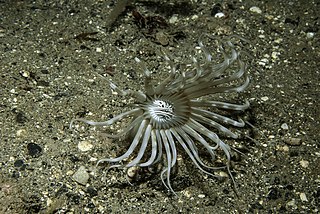 W
WArachnanthus sarsi is a species of tube-dwelling anemone in the family Arachnactidae. This species is found in the North Atlantic in subtidal sand or muddy sand at depths of 15–130 m.
 W
WCaenopedina hawaiiensis is a species of sea urchins of the Family Pedinidae. Their armor is covered with spines. Caenopedina hawaiiensis was first scientifically described in 1912 by Hubert Lyman Clark.
 W
WCampodea plusiochaeta is a species of two-pronged bristletail in the family Campodeidae.
 W
WCarnarvonia is a genus of arthropods of uncertain affinities, known from the Middle Cambrian Burgess Shale. Its bivalved carapace bears the imprints of its veins.
 W
WCephalogonimus vesicaudus Nickerson, 1912 is a species of digenean trematode parasite found in North America. This species typically infects the small intestine of North American soft shell turtles, but may also infect slider turtles, map turtles, mud turtles, green frogs, and ducks.
 W
WEchinus tylodes is a species of sea urchin in the Echinidae family. It is white with rather sparse pink spines, and is endemic to the eastern coast of North America including the Gulf of Mexico.
 W
WMetagonimus yokogawai is a species of a trematode, or fluke worm, in the family Heterophyidae.
 W
WPachycerianthus multiplicatus, commonly known as the firework anemone, is a species of tube anemone in the family Cerianthidae. This species is found in sheltered, subtidal mud at depths of 10 - 130m.
 W
WStrongylocentrotus fragilis is a species of sea urchin of the family Strongylocentrotidae.